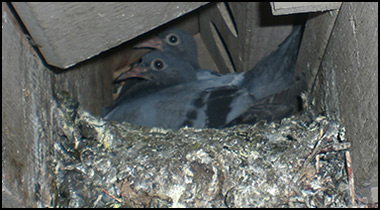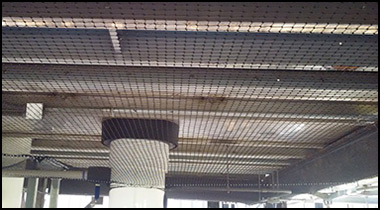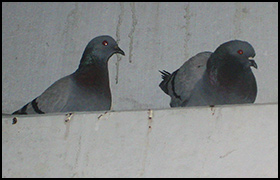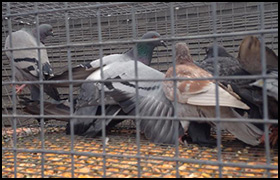Albuquerque Bird Control
Welcome to Bird Removal of Albuquerque! We specialize in the humane and effective resolution of human/bird conflicts in the Albuquerque metro region, and throughout New Mexico. Whether you have a single bird in a building, or need to prevent pigeon roosting (and bird droppings) on a large architectural project, we can solve your Albuquerque bird problem effectively and professionally. We install exclusion materials to keep birds away, and even provide pigeon trapping as a means of Albuquerque bird removal. We are not a pest control company, but rather wildlife, bat, and bird specialists only. Click on our Albuquerque Prices page to find out more about our prices for bird control work. You can also read the topics addressed on this website to learn more about how to resolve your specific bird conflict. We look forward to hearing from you.

Albuquerque Bird Removal & Structural Repairs

Exclusion Netting & Spike Installation

New Mexico Bird Trapping & More
Call 24/7 to discuss your Albuquerque bird problem.
Same-day or next-day appointments: 505-273-3180
Thorough inspection of your property.
Written estimates for bird project.
Fully New Mexico licensed and insured.
Structural bird exlusion netting.
Anti-roosting spikes and shock track.
Aurel dispersion and bird harrassment.
Bird dropping cleanup and sanitation services.
Bird damage repair and building exclusion.
Our Service Range - 505-273-3180



Do mothballs or ammonia help repel pigeons?
The simple answer to this question would be, no. Mothballs and ammonia do not help repel pigeons. Mothballs as well as ammonia work on a principle of smell. The strong odor that they both release is thought to deter pigeons. The problem with both, mothballs and ammonia, is that they would only temporarily solve the problem.
Pigeons are good as adapting to certain conditions. This is why the above method is deemed ineffective. The actual deterrent, which in this case, would be mothballs and ammonia; would work temporally but the pigeons would come back after a while since they would be used to the smell.
Mothballs are deemed to be an insecticide and therefore should be handled carefully. While mothballs are almost always made from naphthalene or paradichlorobenzine; they are highly toxic. Both of these work in a similar way and this is releasing toxic materials over time as they disintegrate. In certain instances, it was thought that the toxicity of the month balls would be enough to poison the pigeons and prevent them from returning to the place where mothballs were used as a deterrent. This theory has proven to be incorrect as pigeons are unlikely to eat any of the mothball material and are usually confined to a well ventilated space where the fumes have no lasting effects on them.
Ammonia is also a chemical compound derived to synthetically or found in the atmosphere naturally. Ammonia is usually a part of a household cleaner when diluted down to a safe ratio. As mentioned previously, ammonia is supposed to deter pigeons by its pungent smell and its toxicity. But much like the mothballs; it’s a short-lasting remedy as the pigeons will return to the place where the ammonia was used as a deterrent. As pigeons leave lots of droppings in the place where they nest and congregate, it was also thought that by cleaning that spot with ammonia; pigeons would not return due to the smell and the displacement of their habitat. This is simply not true!
To sum up our findings; don’t depend on ammonia and mothballs to deter pigeons as they will not work. It’s been tested. If you don’t have to interact with either of the chemicals, don’t since they have both been linked to cancer. Pigeons are a very adaptable birds and have even been domesticated so these two products will not work in deterring them.

